
Palmaria palmata, also called dulse, dillisk or dilsk, red dulse, sea lettuce flakes, or creathnach, is a red alga (Rhodophyta) previously referred to as Rhodymenia palmata. It grows on the northern coasts of the Atlantic and Pacific Oceans. It is a well-known snack food. In Iceland, where it is known as söl, it has been an important source of dietary fiber throughout the centuries.
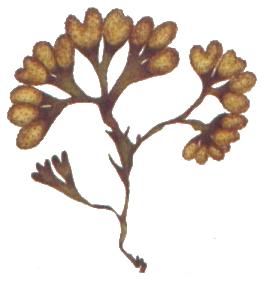
Fucus spiralis is a species of seaweed, a brown alga, living on the littoral shore of the Atlantic coasts of Europe and North America. It has the common names of spiral wrack and flat wrack.
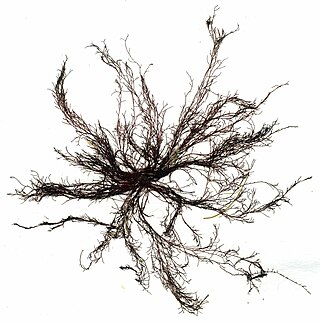
Polysiphonia is a genus of filamentous red algae with about 19 species on the coasts of the British Isles and about 200 species worldwide, including Crete in Greece, Antarctica and Greenland. Its members are known by a number of common names. It is in the order Ceramiales and family Rhodomelaceae.

Conceptacles are specialized cavities of marine and freshwater algae that contain the reproductive organs. They are situated in the receptacle and open by a small ostiole. Conceptacles are present in Corallinaceae, and Hildenbrandiales, as well as the brown Fucales. In the Fucales there is no haploid phase in the reproductive cycle and therefore no alternation of generations. The thallus is a sporophyte. The diploid plants produce male (antheridia) and female (oogonia) gametangia by meiosis. The gametes are released into the surrounding water; after fusion, the zygote settles and begins growth.
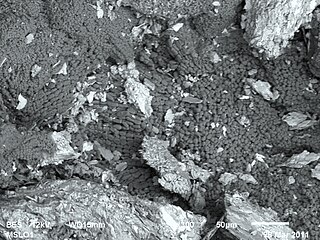
Lithophyllum is a genus of thalloid red algae belonging to the family Corallinaceae.
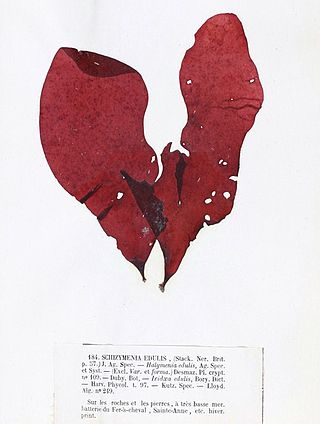
Dilsea carnosa, commonly known as the poor man's weather glass or the sea belt, is a species of red algae in the Dumontiaceae family of the order Gigartinales.
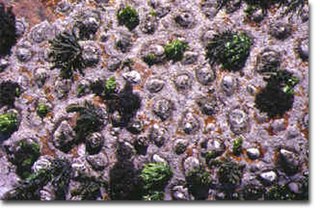
Spongites yendoi is a species of crustose red seaweed with a hard, calcareous skeleton in the family Corallinaceae. It is found on the lower shore as part of a diverse community in the southeastern Atlantic Ocean and the Indo-Pacific Ocean.
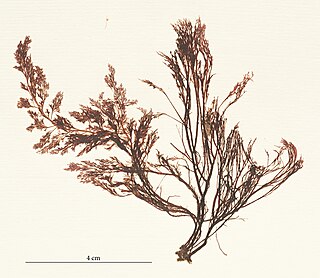
Polysiphonia elongata is a small red marine algae in the Rhodophyta.
Polysiphonia fibrata is a species of Polysiphonia that grows as small dense tufted and finely branched marine alga in the Rhodophyta.

Melobesia membranacea is a small marine alga encrusting on the surface of other algae. In the division of the Rhodophyta.

Ceramium virgatum, or the red hornweed, is a small red marine alga.

Halidrys siliquosa is a large marine brown algae.
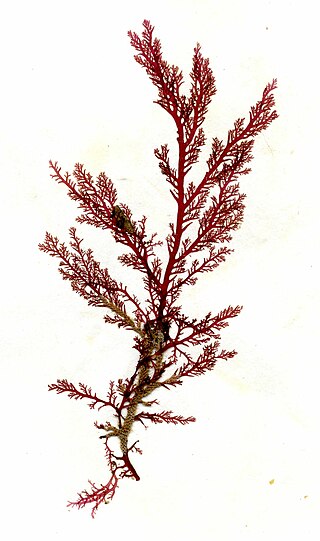
Plocamium cartilagineum is a medium-sized red marine alga.

Hypoglossum hypoglossoides, known as under tongue weed, is a small red marine alga in the family Delesseriaceae.

Odonthalia dentata is a medium-sized marine red alga.
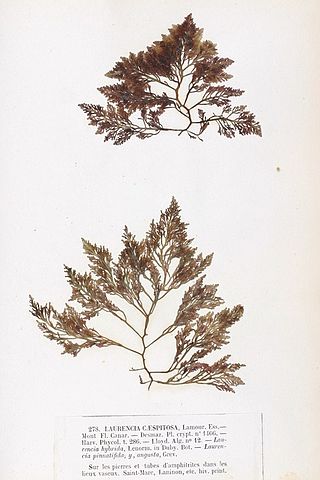
Osmundea hybrida is a fairly small marine red alga.

Lithophyllum orbiculatum is a species of thalloid coralline algae, which are a red algae whose cell walls contain calcareous deposits.
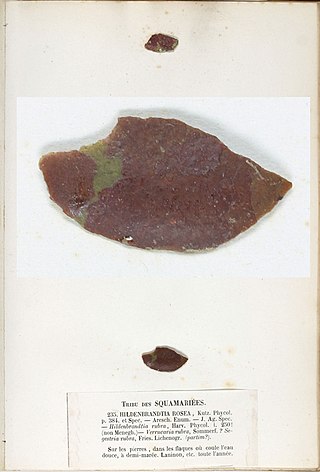
Hildenbrandia rubra is a marine species of thalloid red alga. It forms thin reddish crusts on rocks and pebbles in the intertidal zone and the shallow subtidal zone. It is a common species with a cosmopolitan distribution, and is able to tolerate a wide range of conditions.
Phymatolithon lenormandii is a common red alga.

















